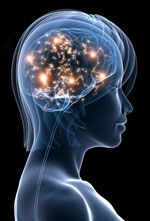Publication
Article
Psychiatric Times
Possible Restriction of ECT Devices: Concern Grows Among Psychiatrists
Author(s):
There is wide agreement that memory loss associated with ECT is short-term, usually temporary, and rarely has a major impact, “although it shouldn’t be taken lightly,” according to Ross.

A contentious and somewhat inconclusive meeting of an FDA advisory panel in late January added to growing concern among psychiatrists that the availability of electroconvulsive therapy (ECT) devices may be restricted. The Neurological Devices Panel of the Medical Devices Advisory Committee recommended that the two manufacturers of ECT devices should be required to get new evidence of their safety and effectiveness in patients with severe depression but not in those with catatonia. The panel voted 10 to 8 in favor of classifying these devices as Class III for depression and 9 to 8 in favor of Class II for catatonia.
“If the FDA requires extensive, complex clinical trials . . . there could be a problem with availability,” explained Christopher A. Ross, MD, PhD, who is professor of psychiatry, neurology, and neuroscience and director of neurobiology at Johns Hopkins University. Dr Ross was one of the psychiatrist members of the panel. He and the other psychiatrists voted to “down-classify” ECT devices from Class III to Class II, which would allow them to stay on the market without their manufacturers having to submit pre-market approval (PMA) applications to the FDA for approval. Those PMAs often require manufacturers to conduct new, expensive clinical trials.
After the vote, Karen Riley-a spokeswoman for the FDA-told The New York Times that the agency would take more than a year to make a decision. The staff report and advisory committee is just the first in a 5-step process; these are followed by an FDA assessment of risks and benefits, a formal agency proposal, another comment period, and final action.
ECT devices are 1 of 27 categories of medical devices classified as Class III-the riskiest class. They have not undergone safety and effectiveness testing because they were on the market before 1976, when Congress passed the Safe Medical Devices Act. That law required testing of all Class III devices except those currently on the market, which were designated “pre-amendment devices.” Over the years, the FDA reclassified all but 27 of the 149 pre-amendment categories. In 2009, the agency issued a Federal Register notice requesting safety and effectiveness information from manufacturers to determine whether ECT devices should remain in Class III. This would trigger a requirement for submission of a PMA application to determine whether the devices should be reclassified into Class I or II. If the FDA down-classifies ECT uses to Class II, the FDA could require special labeling, design requirements, mandatory performance standards, and postmarket surveillance requirements. The two manufacturers argued for down-classifying ECT devices to Class II.
There has been scuttlebutt that a Class III determination by the FDA or any requirement for clinical trials and their attendant costs would cause manufacturers to discontinue selling the devices. In a joint e-mail, Richard Abrams, MD, and Conrad M. Swartz, PhD, MD, co-directors of Somatics, LLC, said, “We understand that the informal opinion poll taken by the ECT Advisory Panel to the FDA committee was by no means final and constituted just one phase of an ongoing process that will take at least another year to complete. Many thanks for your interest but we prefer not to respond to hypothetical questions-there will be plenty of time to respond to what actually happens.”
However, Tracey Kirsch, president of Electromedical Products International Inc, marketer of the Alpha-Stim cranial electrotherapy stimulation (CES) devices-another of the 27 Class III pre-amendment categories awaiting action-said, “I agree that requiring a PMA for devices currently in distribution could be devastating for a company.” CES devices are used at home and can be obtained in this country with a prescription.
The people who spoke at the January FDA meeting voiced a range of opinions on ECT safety and effectiveness. Psychiatrists and some patients praised ECT as lifesaving and said any adverse effects were a small price to pay. Opponents argued that effects such as memory loss (the major adverse reaction) are serious and constitute a reason to ban use of ECT.
The primary evidence of safety problems comes from the FDA’s MAUDE database. The FDA had received 151 original adverse events reports (135 voluntary reports and 16 user facility reports) associated with ECT devices as of December 7, 2010. Memory loss was reported in 117 cases, or 77% of all reports. Brain damage was noted in 9 cases, death in 2 cases, and suicide in 2 cases (1 reported a suicide attempt).
There is wide agreement that memory loss associated with ECT is short-term, usually temporary, and rarely has a major impact, “although it shouldn’t be taken lightly,” according to Ross. The fact that only 2 deaths and 1 suicide (and another attempt) were reported in the 15 years in which the MAUDE database has been up and running would seem remarkable, given the high risk of suicide in patients with untreated depression. Ross pointed out that there is broad consensus that ECT dramatically reduces suicide ideation and completed suicides. “Moreover, for some patients, these are lifesaving, remarkably effective treatments, used in many cases after all other alternatives have failed,” he stated. “However the FDA review turns out, there is a great opportunity for research to understand the mechanism of action of ECT; to determine which patients benefit the most, and to devise ways to minimize the side effects.”





